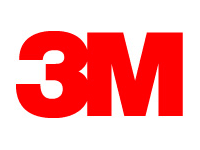Materials Under Stress
Experiment #1
In this exercise, we will explore the behavior of elastic bodies under load, identifying parts that are under stress (compression or tension). In the following steps, observe the space between the grid lines on the flexible (elastic) urethane foam beam. Refer to figure 1 as you perform the following experiments.
Step 1
Place the foam beam on a flat surface such that it at rest. Measure the horizontal distance between the lines. When an elastic material is at rest, is there any stress in the material?
If you apply force to an elastic material (press down on it), what happens?
When the force is removed, what happens?
Name some elastic materials.
Step 2
Have two of your team push on the ends of the beam. Measure the horizontal distance between the lines.
What happens to the material?
Step 3
Have two of your team pull on the ends of the beam. Measure the distance between the lines.
What happens to the material?
Step 4
Have one of your team bend the beam. What happens to the material near the top edge?
The top edge of the beam is under which type of stress?
What happens to the material at the bottom edge of the beam?
The top edge of the beam is under which type of stress?
What happens to the material in the middle of the beam?
Is the material in the middle of the beam under any stress?
Experiment #2: Strength of Beams
In this experiment you will be loading a beam with weight to determine its breaking strength and discovering the tensile and compressive properties of the material, the effects of the shape of the beam on load capacity, and the concept of reinforcement. In each step lay the specified beam across the supports with the weight box suspended in the middle of the beam. When adding weight, support the box with a pencil to minimize the shock of dropping a weight into the box. Continue adding weigh until the beam fails (listen for the crackle as the beam nears it maximum capacity). In each step, inspect the beam at the point of failure to determine how the beam failed.
Step 1
Place a beam across the span as shown in Figure 3 such that the wide dimension is horizontal (facing up). Start with weights in the weight box. Gently add weights to the weight box until the beam fails. How much weight did it hold? Did the top of the beam crumple or did the bottom of the beam tear when it failed?
Did the beam fail in compression or tension?
If the beam were twice as wide, how much weight would it hold?
Explain your prediction.
Step 2
For this step, place the beam across the span with the wide dimension vertical. Predict whether it will hold more or less weight. How much weight did the beam hold? Were the results what you had predicted? Can you explain the results?
If the beam were twice as thick, how much weight would it hold?
Explain your prediction.
Step 3
For this step, use a beam that has a piece of tape along one of the narrow edges. Should the beam be positioned with the taped edge up or down? Explain why.
Predict whether the beam will hold more or less weight. How much weight did the beam hold? Were the results what you had predicted? Explain your prediction and the actual result.
Why does a tiny bit of tape have such a large effect on the load carrying capacity of the beam?
Would adding tape to the top of the beam make it even stronger? Explain.
Can you think of an application of what you have learned here?
What is the name of the material used to reinforce concrete?
Experiment #3: Gerdanken Experiment
Many beams have shapes similar to those shown in Figure 3.
What Is the name for beams shaped like the capital letter I?
Why are beams shaped like this?
Can you name at least three benefits of building beams in these shapes?
Can you name some of the places where each type of beam is used?
Summary of Experiments
Key words
Compression, Tension, Stress and Lever Arm
How do are the principles of levers applied to increase the load a beam can carry?
Is relative strength of materials under compression and under tension always the same?
Why is this important?
What techniques can be used to balance the strength of structure members?
Why are beams (e.g., a crane booms) fabricated out of many cross members or with cut-outs rather than being solid?
Why does adding a small amount of tensile material improves the strength balance of concrete beams?




